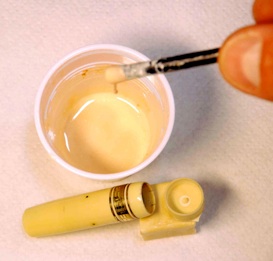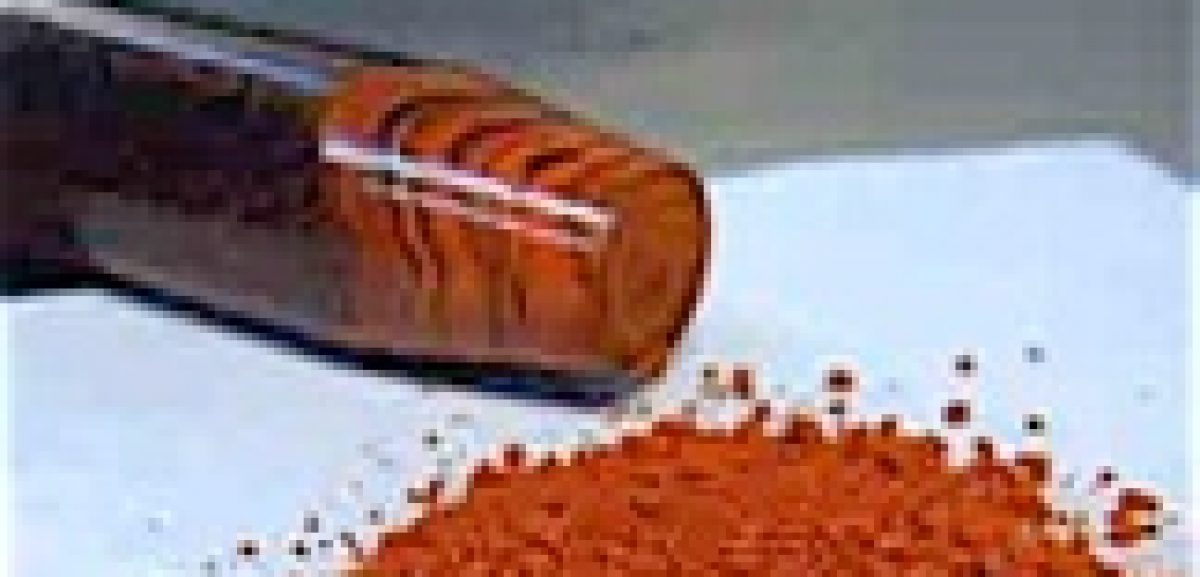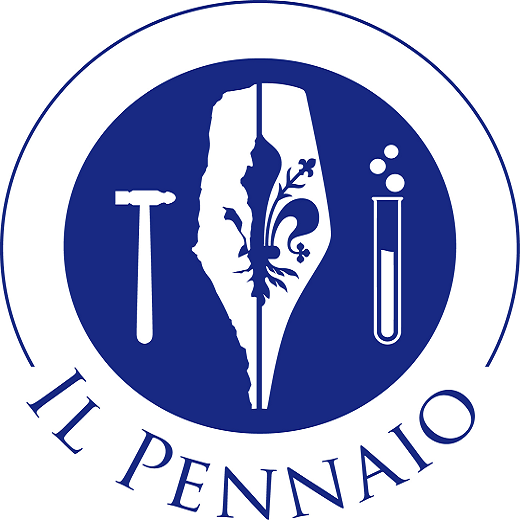When the pen material shows a crack or a chip, a special resin is applied to reconstruct the missing part. This resin undergoes a special process to ensure it is completely compatible with the original material.
The perfectly matching color is obtained by hand mixing primary colors made from pure oxides subsequently processed in an autoclave.
Bars and sheets of celluloid, ebonite, and synthetic or original galalith can be used to rebuild broken or missing parts sometimes directly welded to the broken piece .

The restoration of an Aurora Ethiopia which had a cap with a missing a part visible to the naked eye.

A sample resin loaded with an orange oxide pigment.
It is important to know what material can be used alongside the original material in order not to incur further deterioration. Damage can result from using a non-compatible resin that could, even years later, trigger a deterioration process that might not have been initially evident.
To this end, every viable restoration material that we find on the market is subjected to various tests for months, accelerating, where possible, the aging process. Photos taken with an electronic microscope at pre-established intervals provide a history of any changes that might have occurred. This research has started in 1997. Some of the materials dating back to that time are still being used, others have been replaced thanks to the research and collaboration of chemistry experts who keep us constantly updated.
